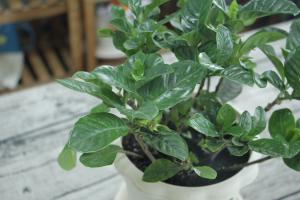Is a pine tree a non-flowering plant?
When we think of plants, the first thing that comes to mind for many of us is flowers. Flowers can be beautiful, fragrant, and attractive to birds, bees, and other pollinators. However, not all plants produce flowers. Some plants, including pine trees, are considered non-flowering plants.
The anatomy of a pine tree
Pine trees are gymnosperms, which means they produce seeds without the use of flowers. Instead, they produce male and female cones that contain the necessary reproductive organs. The male cones, which are much smaller than the female cones, produce pollen that fertilizes the eggs produced by the female cones.
Pine trees have several distinct features that set them apart from flowering plants. For example, they have needle-like leaves instead of broad, flat leaves like many flowering plants. Pine trees also have a unique resinous scent that is easily recognizable and often associated with the holiday season.
The benefits of non-flowering plants
While many people enjoy the beauty and fragrance of flowers, non-flowering plants like pine trees provide a wide range of benefits. For example, they can help prevent soil erosion, provide shade and shelter for animals, and absorb carbon dioxide from the atmosphere.
Non-flowering plants are also generally hardier than their flowering counterparts. They can often survive in harsher environments and are less susceptible to diseases and pests. This makes them an excellent choice for landscaping projects in areas with extreme weather or poor soil conditions.
Pine trees in our everyday lives
We may not think about pine trees very often, but they play an important role in our everyday lives. For example, the wood from pine trees is used to make a wide range of products, including paper, furniture, and building materials. Pine needles can also be used to make teas and other medicinal remedies, and the essential oils extracted from pine trees are used in aromatherapy and other types of treatments.
Pine trees also have a long history of cultural significance. In many cultures, the pine tree is considered a symbol of peace, wisdom, or fertility. In some parts of the world, pine trees are even used as Christmas trees, decorated with lights and ornaments during the holiday season.
In conclusion
While pine trees may not produce flowers, they are an important and fascinating group of plants. Their unique anatomy and hardy nature make them an excellent choice for landscaping, and their many uses in everyday life speak to their practicality and versatility. So, even though pine trees may not be the showiest of plants, they are certainly worth our attention and appreciation.

 how many times do yo...
how many times do yo... how many planted tre...
how many planted tre... how many pine trees ...
how many pine trees ... how many pecan trees...
how many pecan trees... how many plants comp...
how many plants comp... how many plants can ...
how many plants can ... how many plants and ...
how many plants and ... how many pepper plan...
how many pepper plan...































